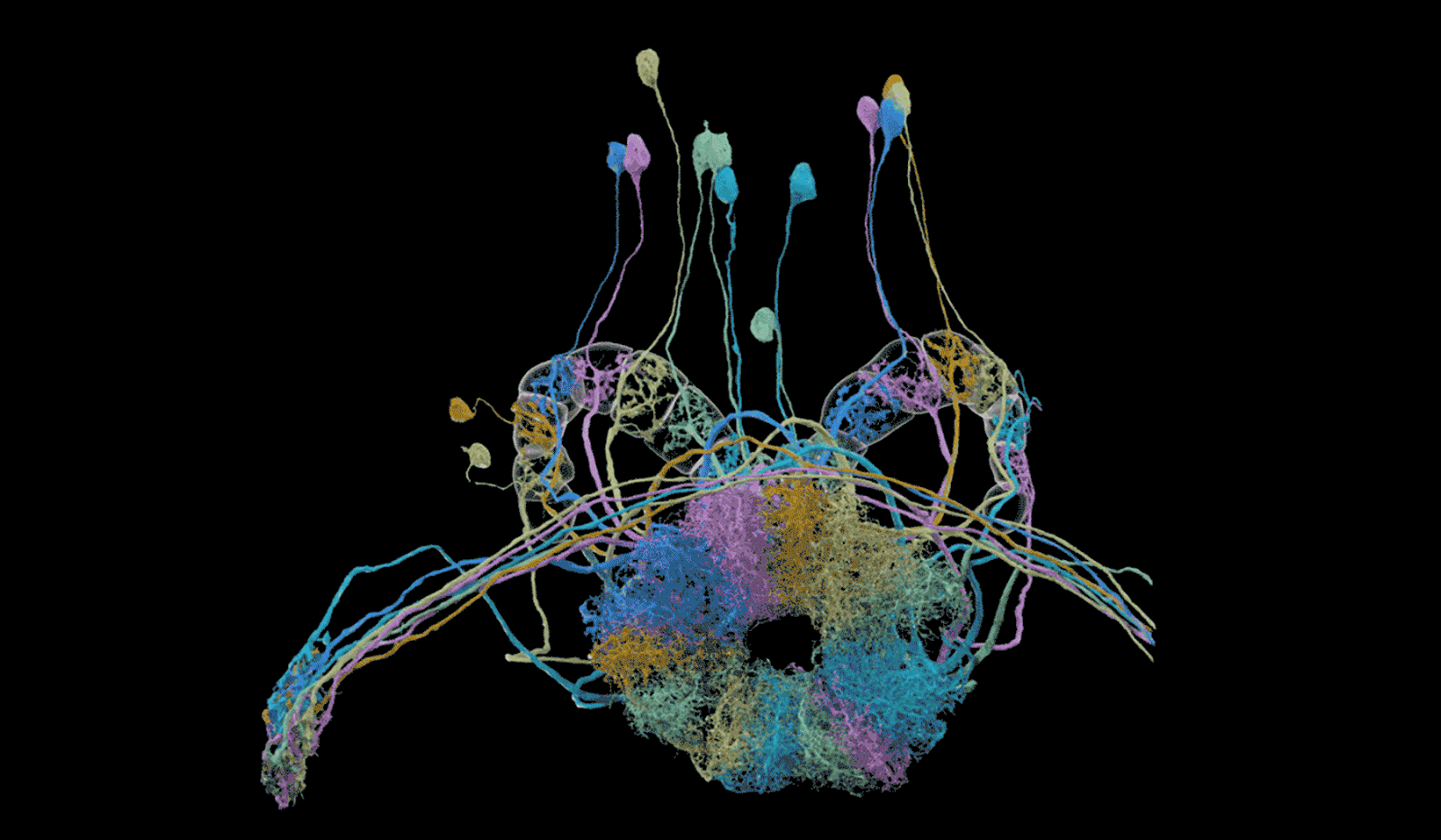How does the brain process information?
When you speak with a friend, information streams in and out of your brain. Information about your friend’s speech, facial expressions, and body language is transmitted to your brain by your eyes and ears. Information exits your brain through control of your own speech and body movements. When scientists measure activity inside the brain, they find information linked to our thoughts, emotions, perceptions, and memories. But how is information represented and processed within a physical organ?
Brain cells code information with electrical impulses
Nerve cells called neurons in the brain and spinal cord use electrical signals to process information. Neurons send signals to each other through nerve fibers called axons. When a neuron becomes “excited” it fires an electric impulse along its axon. One way that neurons code information is in the rate that they “fire” these electrical impulses. For example, in order to squeeze just the right amount of ketchup out of a bottle, our brain must get information about how much pressure we are applying with our hands. Neurons send information from the skin to the brain to allow for the sense of touch. The more pressure that there is on the skin, the more often these neurons “fire”. The brain can tell how hard we are squeezing the bottle based on the number of electrical impulses that are fired.
Brain cells communicate through synapses
A single neuron cannot do much. When sensory signals reach the brain, they must be decoded by other neurons so that this information can affect our perceptions, thoughts, and behaviors. Neurons communicate by sending electrical signals to each other through their axons, a bit like how we communicate by sending signals along telephone lines. However, a neuron’s axon doesn’t connect directly to other neurons. There are tiny spaces called synapses between the ends of axons and the neurons they communcate with. When an electrical impulse traveling through an axon reaches a synapse, chemicals called neurotransmitters are released into the synapse. This release of neurotransmitters acts as a chemical signal to transmit information between two neurons. Neurotransmitters released by one neuron can either increase or decrease the “excitation” of other neurons, depending on the neurotransmitter. If a neuron becomes excited enough, it fires its own electrical impulse.

Brain cells connect into complex networks
The brain contains around 86 billion neurons, about 10 times more than the number of people in the world. Each neuron typically receives information from connections with thousands of other neurons. This allows a neuron to combine many sources of information before firing its own electrical signals, which it also sends to many other neurons. The huge number of connections between brain cells forms an extremely complex network for transmitting and processing information. This network allows the brain to interpret information from the senses, form thoughts and emotions, and control behavior.


Information is coded through many brain cells
In the parts of the brain responsible for controlling arm movements, some neurons will fire more electrical impulses when you reach to the left, and some neurons will fire more impulses when you reach to the right. For any particular direction that you move your arm, a large number of specific neurons will fire. It is possible to count the rate of electrical impulses being fired in many different neurons by implanting many tiny electrical sensors into the brain. This information can be used to decode which direction a person is trying to move their hand. This technology has been used in laboratories to allow people who are paralyzed to control a cursor on a screen, to move a robotic arm, or to communicate by imagining that they are writing words with their hand!
For this technology to work, it is not necessary to find any particular neuron because no individual brain cell is responsible for controlling movements. The brain generally doesn’t process information through individual neurons, but rather through “populations” of many neurons. Information spreads widely to many neurons because there are so many connections between neurons.
Next, check out how does the brain control movement?.